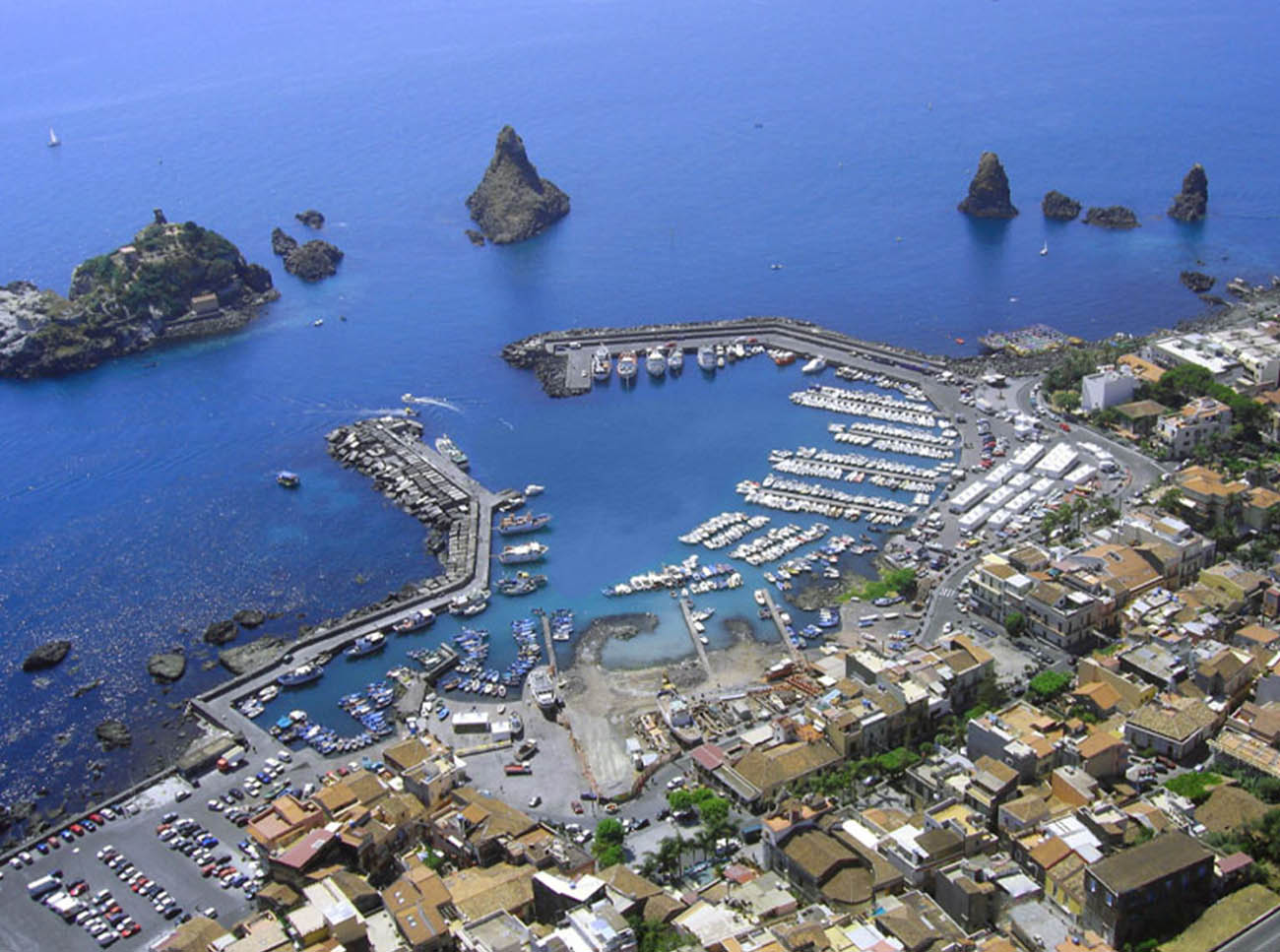
ACIREALE, ACI TREZZA AND ACI CASTELLO: THE THREE PEARLS OF THE RIVIERA DEI CICLOPI
You can find a lot of towns with the prefix ‘Aci-‘ in the Catania area and, according to tradition, it leads back to the myth of the shepherd boy Aci, killed out of jealousy by the Cyclops Polyphemus because of his love for the nymph Galatea, who turned the blood of the lover in a river that flows underground these lands and flows into the sea.
It is thought that the towns with this prefix drew their origin from the name of a mysterious Greek city that is now completely gone.
The Faraglioni of Aci Trezza: legendary Sicilian beauties
Aci Trezza and Aci Castello are two picturesque seaside locaties which stand about 1 km from each other, really close to Catania. These two towns, despite being important tourist destinations in Sicily, manage to maintain the identity of small fishing villages.
Aci Trezza is actually a fraction of Aci Castello and is known as a seaside village overlooking the Ionian Sea, and near it are located the isole Ciclopi (Cyclops islands), a small archipelago made up of faraglioni (stacks) and rocks immersed in the waters.
From here you can enjoy the view of the faraglioni of Aci Trezza. You also cannot miss:
• the Museo Civico (Civic Museum) inside the remains of the castle;
• a wonderful orto botanico (botanical garden) that hosts succulent plants from all over the world.
The Faraglioni
Its Faraglioni have enchanted poets and writers for centuries, so much so that over time they have become setting for poets and novels. These are magical and fascinating places, mentioned from the time of the Homer’s Odyssey to the Malavoglia by Verga and which continue to delight and let visitors dream.
Right in front of the distinctive marina of Aci Trezza, also stands the island of Lachea, that watches over the continuous hustle and bustle of fishing boats; together with the stacks, the island estabilishes the archipelago of the Cyclops. The peculiarity is that to reach the islet, there is no organized service: the visitors are transported by the local fishermen themselves, aboard their boats.
Myths and legends
This superb place brings out the most romantic and magical side of Sicily: in fact, there are many myths and legends that arise from here and the stacks are their background. Their origin is linked to the anger of the Cyclops Polyphemus who, blinded by Ulysses, would have thrown the rocks into the sea against the Greek hero to prevent him from escaping. This story has fueled the legend about the Cyclops islands, revealed in the ninth chapter of the Odyssey as well.
But in addition to their legendary origin, their birth can be traced back to the evolution of Etna and the intense volcanic activity that began about one and a half million years ago.
In addition, Verga, fascinated by so much beauty, decided to set the story of the fishermen of “I Malavoglia” in Aci Trezza, making these places famous all over the world.
It is the perfect destination for those looking for breathtaking views and willing to explore nature. Boats also leave from the village to go out to sea and admire the stacks and rocks up close; they are also places where you can swim, snorkel and dive in pure and crystalline waters, or simply to visit by canoe or pedal boat.
Aci Castello
It owes its name to the presence of a majestic Norman castle that rises above the sea, perched on a basaltic rock base. Today the castle is opened to visitors, offers an excellent view of the coast and inside it you will find the civic museum.
At his feet it overlooks an elegant and always very appreciated square with a splendid view of the cliff and the stacks lying on the opposite side of the bay. Thanks to a staircase you can go down from the square to the beach below, on which the castle rises.
The historic centre
The historic centre of the town is very pleasant, with its small churches and many buildings made of lava stone. There are also bars, restaurants and pizzerias, and some well-known discos in the area too.
The seaside
It connects Aci Castello to Catania and is known as ”La scogliera” (“The cliff”). Very popular among the local people, its uniqueness is due to the black lava rock coast and the vegetation that separates the beach from the road. The area is always crowded with people walking, cycling or jogging.
Due to the rocks and the rocky bottom, the beach in this area is not very comfortable. Alternatively, you can make use of the bathing establishments set up during the summer, where you can rent umbrellas and sunbeds.
Acireale
Finally, it’s time for Acireale. It is the second most populous city in the province. It is known for its carnival, for the Baroque style over the whole city and for its thermal baths. It’s close to Etna and includes a series of seaside villages with a marina.
According to tradition, in Roman times a city called Akis was born in this same territory and it is narrated that it took part in the Punic wars. In the Middle Ages, the village consolidated around the castle of Aci and only in the 14th century about dozen families moved further north, where Aquilia (Aci d’Aquila) or Aquilia Nuova was born: it became the first stable point of today’s city.
The city has a small centre known for its Piazza del Duomo dedicated to the Annunziata and Santa Venera, with its majestic appearance given by its baroque churches that really stand out for their beauty and grace, and the Basilica of Saints Peter and Paul. Past the Piazza Duomo, stands the majestic Basilica of Saint Sebastiano, another wonderful example of Baroque art.


